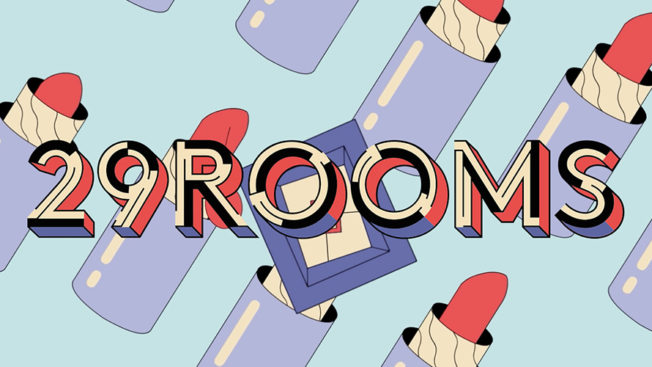Inspiration meets innovation at Brandweek, the ultimate marketing experience. Join industry luminaries, rising talent and strategic experts in Phoenix, Arizona this September 23–26 to assess challenges, develop solutions and create new pathways for growth. Register early to save.
The first quarter of a new year is a time to set goals, reflect and look at a new calendar year, but it’s also the start of a new cultural year.
There’s CES, the Super Bowl and SXSW, to rattle off a few events. As the head of an experiential marketing agency, it’s an exciting time for me to watch creativity flourish. These large cultural events often bring up conversations around brand sponsorships. Having partnered with many clients on sponsorships during this season, I know these can seem like perfect moments for brands to engage their consumers on a mass scale. But is that really the best way to make your mark in culture?
As most of us know, talking to millennials and now Gen Z demands that brands show an authentic, unique voice. The challenge with sponsorships is that they don’t provide enough of a framework to let a brand show off its unique values and identity. What often ends up happening is that brands get lost in the clutter as they compete against the larger cultural moment for a consumer’s attention.

Let’s look at the Super Bowl as an example. It’s one of the most highly anticipated games of the year for football fanatics, and also one of the most heavily sponsored events. If you’re lucky enough to get a seat at the game, you might be excited to see your favorite beer flowing, courtesy of a brand sponsor.
But when you head home, you’re likely thinking less about the beer and more about the game—an amazing pass, an impossible touchdown. That’s what keeps you coming back to the Super Bowl year after year.
So, rather than latching on to someone else’s moment, I encourage clients to invest in their brand by creating a moment they can define and own.
When a brand creates its own moment, it creates room for a richer brand experience—and creating a brand experience enhances a brand’s end product. Consumers will start to see your brand as representative of not just a product but a larger lifestyle. It’s a snowball effect that energizes a community and transforms a moment into a movement—kind of like the Super Bowl.
Some brands are doing just that, and consumers are rallying behind them. Here are a couple of examples:
Chipotle Cultivate
In 2010, Chipotle launched Cultivate, a one-day, free festival that brings together people for a celebration of food and music. Beyond offering a space for its consumers to have a good time, Chipotle used the festival as a platform to encourage attendees to think and talk about food and food issues in an engaging environment.
In addition to live music and on-site chef demonstrations, the festival included interactive experiences focused on sustainable food. In doing so, Chipotle shifted from offering just a product to a larger brand experience centered around sustainability.
Cultivate is now in its sixth year, with festivals held around the country, and has partnered with countless brands aligned with its mission since, including Naked Juice, Organic Valley, California Avocados and many award-winning celebrity chefs, to name a few. If that isn’t a testament to the power of brands creating their own moments, I don’t know what is.
Refinery29’s 29Rooms
Refinery29’s self-proclaimed mission is to be the No. 1 media brand for smart, creative and stylish women everywhere. Clicking through the site, the brand’s voice and mission come through loud and clear through the highly curated content. So, when it came to New York Fashion Week, Refinery29 chose to do something interesting, something to help ensure it didn’t get lost in the high-gloss, high-price world of this highly anticipated cultural moment.
It launched 29Rooms, an installation in Brooklyn that moved its content from the digital world to the physical world. Guests were invited to walk through a funhouse of 29 individual rooms, where fashion, style and culture all came to a beautiful intersection. The rooms, curated in collaboration with different brands and celebrities, created rich, interactive experiences that engaged the senses while also sharing powerful messages.
In the Gurls Talk space, filled with phones, guests could listen and learn from women’s stories of overcoming obstacles; in the Born This Way Foundation room, guests entered a blank canvas space where they could write what they thought a brave world looked like, filling the room gradually with messages of love. Everything about the activation, including the location and underlying message of female empowerment and community, was crafted to be unique to and evoke the Refinery29 brand.
Refinery29 could have chosen to be a sponsor for one of the countless NYFW events. If it did, it might not have had the opportunity to execute so much creative control. Instead, it chose to invest in its own brand and create its own moment, where it would have the space to execute a vision authentic to the brand. And the investment paid off. 29Rooms was wildly popular in its first year, drawing enormous lines, and ultimately led Refinery29 to make it an annual event.
No Commission: Art Performs
Partnering with Swizz Beatz and the Dean Collection, Bacardi asked my agency, Magnetic Collaborative, to produce an event that would captivate its consumers. So, we launched No Commission: Art Performs, a four-day, immersive brand experience showcasing art, music and some delicious cocktails.
This celebration of culture helped redefine the brand-artist relationship. We transformed an abandoned warehouse in the Bronx into a premium gallery and festival space. We brought Bacardi to the forefront of the cultural conversation around art and music in one of the most unlikely areas of New York.
The result? Consumers went nuts. More than 7,000 people attended the four-day experience, and 98 percent of artists’ work was sold, with all proceeds going directly back to the artist. The media also took notice. Taking an integrated approach from pre-event planning to post-event coverage, including media and influencer outreach, the experience was used to power a media campaign to guide a cultural reappraisal of the Bacardi brand. Event reporting tracked over 200 clips totaling over 500 million social impressions, including coverage from The New York Times, W Magazine, the Huffington Post, Bloomberg BusinessWeek, BET and more.
Bacardi owned the moment, versus being a small part of someone else’s moment.
Other brands are tapping into this trend, too—think Budweiser’s Made in America concert and the Sweetgreen Festival—in an effort to build brand equity with its consumers.
So, we’ve talked about why brands should consider creating their own moments. Now, you’re probably seeing dollar signs and wondering, is creating that moment realistic? Don’t kid yourself—it takes time to develop an asset, but let’s go back to the Cultivate example. It took three years to develop a property, but by year three, Chipotle was already looking to their business partners to see how they could bring them in as partners in their property. The investment is a lot smaller than you would think, and will yield a higher ROI than a traditional sponsorship. Brian Schultz is founder and chief experience officer at Magnetic Collaborative.








